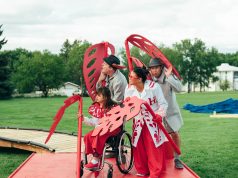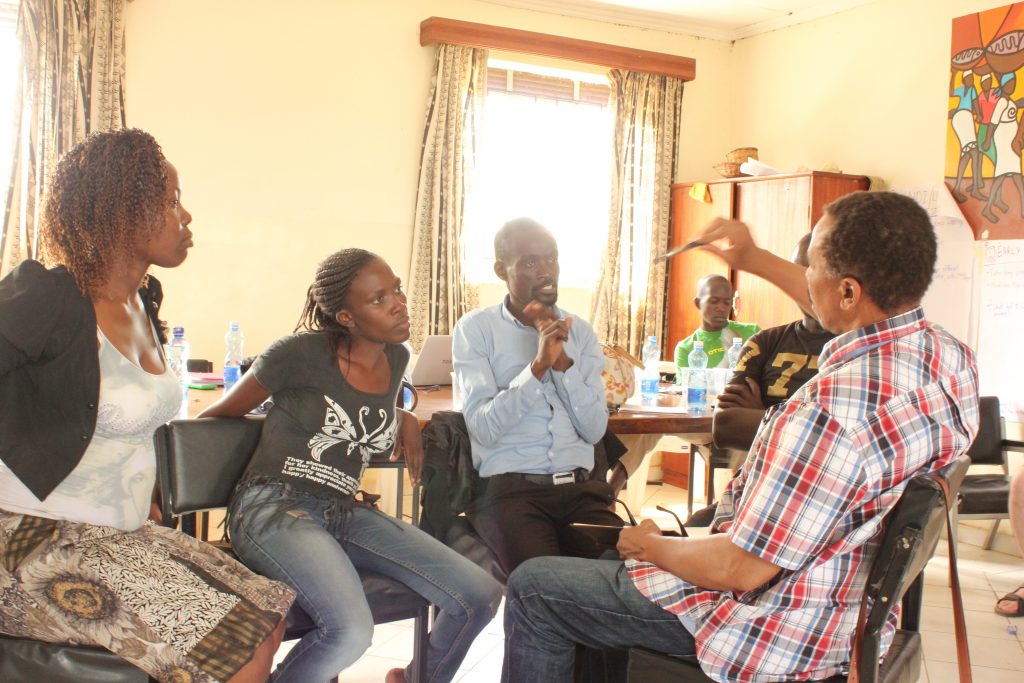
We are two Canadian theatre artists working in Western Kenya in association with rural and urban community-based theatre, music, and dance performers. Some are committed to a social activist agenda as they make their art, and others are focused on building their skills and pursuing artistic career aspirations – many are involved with both. We are writing from the middle of a project that will be previewed within its originating community in two short months. This project raises a variety of interesting points for artists who make socially-committed performance.
The process we pursue involves a collaboration across several layers of difference – between individual Kenyan art companies, across art forms, and across artists from Canada and Kenya. The emerging play is an exciting mashup of traditional and contemporary Kenyan music, dance, and storytelling. Inspired by collective creation methods, a company of twenty investigated a local story theatrically and thematically in intensive workshops, spread over two years. There are three co-directors, two Kenyan and one Canadian, and a writing/dramaturgy team made up of the directors and two additional Canadians and one Kenyan. The process is challenging, but worthwhile. The gaps in our understanding require a commitment to revel in ‘not knowing’ and asking naïve questions.
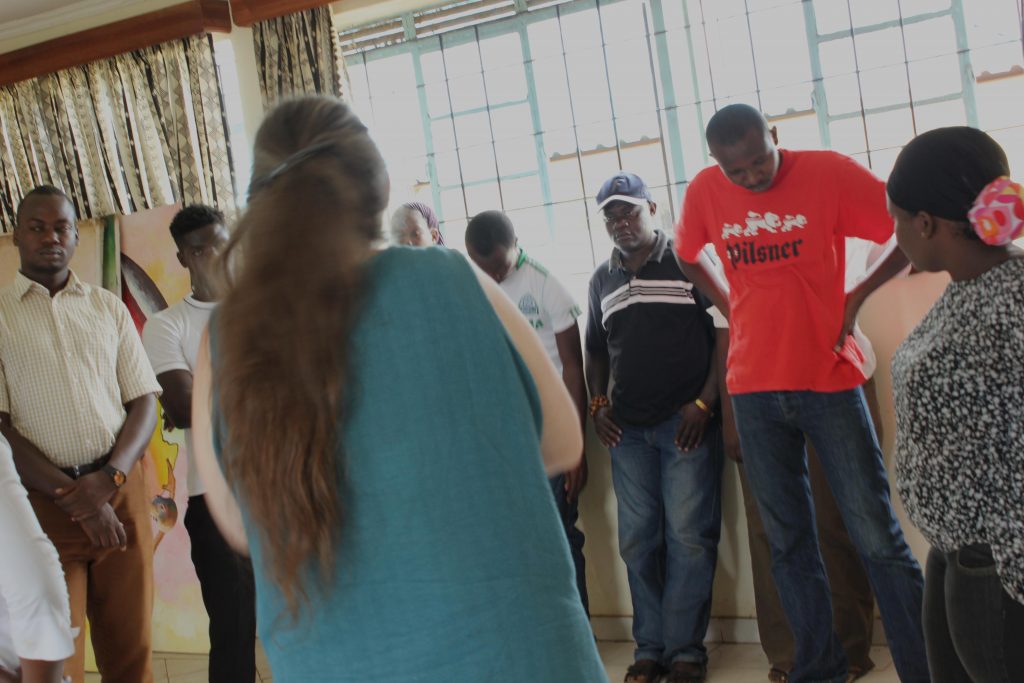
We believe theatrical form and practice should emerge from intention, which must emerge from context. By entering a specific milieu – a particular cultural, social, and historical location – with open curiosity and high attention to seeing and listening, needs and aspirations of a community are revealed over time. When we are curious, patient, and open, we discover and invent meaningful processes and forms. Short-circuiting any of these phases – context→intention→process→form – risks undermining the others. Investing richly in each can create a vibrant theatrical event that is deeply embedded in the social fabric it is trying to serve. We attempt to avoid pre-selection of theatrical forms and pre-determination of the “issue” to be addressed. This creative engagement changes what is produced, including the forms, process, and how it impacts the audience and others.
This non-prescriptive and open-ended approach is often short-circuited by the relationship of agencies with specific social agendas to artists that they contract to meet them. This observation comes from Jan’s experience creating this kind of art in a wide variety of settings. While creating strategic alliances with organizations and agencies pursuing significant social and educational interventions creates opportunities for long-term interventions and demonstrably direct impact, it can also lead to instrumental yet thinner art than we dream of. With this project, we have had the enviable opportunity to take pre-determined agendas out of the equation. We are, however, driven to ask how art can play a vital role in much needed social change if we don’t go in a straight line after specific social problems or pre-determined interventions?
Our long term project is called Old Stories in New Ways. Situated in Western Kenya, we are looking at traditional stories as vehicles that express a specific cultural context. What are the stories that resonate and last and what might they say to the society today, particularly given the rapid globalization and urbanization the region is experiencing?
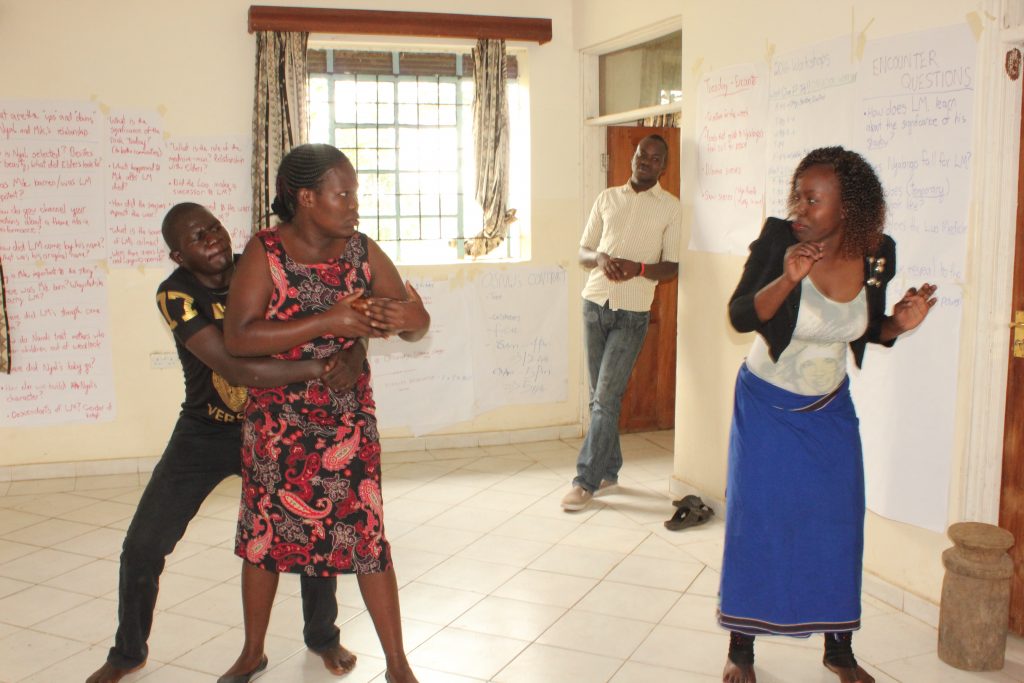
Why an old-fashioned story? Yes, it is beloved in the community and evokes a deep sense of nostalgia, but it is also conservative in that it reinforces social values that are currently under question. For example, in the story we are currently working on, Lwanda Magere, divisive tribalism is reinforced and women as secondary citizens are normalized. So why stage such a regressive narrative? In order to progress culturally, we believe we need to start where the community is, rather than where we or anyone else thinks it should be. Through a collaborative adaptation process, adherence to tribalism is challenged, and women’s biographies, oppressions, and capacities are revealed. We hope that the community’s affinity and investment in the story builds high engagement and that when the story is both questioned and delved in new ways, a deep involvement with its challenges will occur.
Throughout the development process, questions such as “where did she come from?” “what would happen if she refused?” and “why did he behave like that?” were explored through theatrical improvisation. The play will invite the audience to join us in that exploration. It is called Kwe Kalyet: Lwanda Magere Revisited. The title represents three languages and includes the name of the original local story and a call for cool peace. As of writing we continue its creation and await the community’s response.
Artists’ responses are very positive. One actor, William Okumu, thinks that by “acting it out, I am a change agent, a change advocate.” Raphael Omondi, the Kenyan partner who was integral in bringing the artists together, has this to say: “We are using old stories as an advocate for peace and coexistence, especially at a time where we are experiencing a lot of social injustice[…] Using an old story, and not telling it just the way it is, but delving into it, will be very important for the community.” By starting from and challenging what the community knows, feels, and is familiar with, Omondi and many of the artist participants in this project believe crucial social issues will come to the surface.
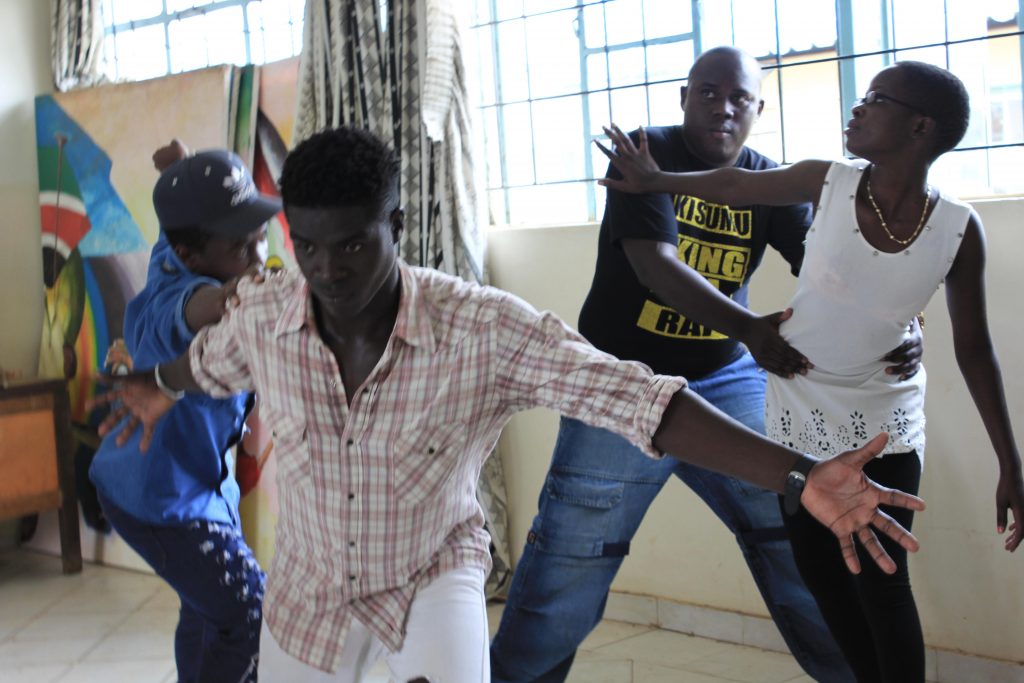
The context gave us the story. Asking questions and theatrically delving beneath its surface exposed inequities in the community and the culture. That led to defining our collective intentions, to challenge unexplored gender inequities (despite current Kenyan rhetoric about equality) and to advocate for concrete, meaningful steps towards inter-ethnic peace that goes beyond generalized conversation about the importance of tolerance. The play reveals and confronts these conditions by exposing them within the radical adaptation.
Gauging success in community-based, socially-committed theatre is not a cut and dried process. Change comes slowly and not without challenges from within and without. If we believe in art as a change agent, surely we must also believe in pursuing the richest possible expression of that art. Theatre can delve below the surface, embracing and exposing contradictions and tapping emotional depths. It behooves us to keep experimenting with how to best do that.
This team’s engagement with context first, and only then intention, process, and form, has taken us to focus on story adaptation as a driving force that can engage, inspire, and challenge. It is our hope, and we eagerly anticipate experiencing the answer, that this production and the artists involved will spark real, active, and important discussions that move the community forward.







